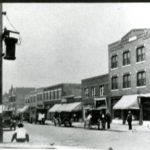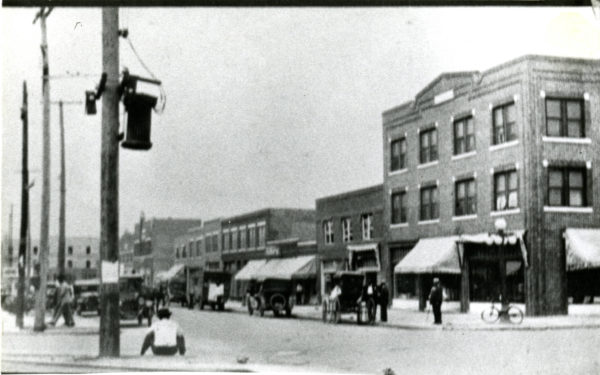[ad_1]

Despite being one of the biggest armed massacres on U.S. soil, the 1921 Race Riots in Tulsa, Oklahoma, are rarely ever discussed, taught, or acknowledged. The tragedy occurred when angry white mobs burned down a prosperous, self-sustained African American neighborhood called Greenwood that was occupied by black professionals and property owners. Over 300 black-owned businesses thrived in the community known as the “Black Wall Street” before they were all destroyed and hundreds of African Americans were killed. The tragedy, however, has been largely glossed over in history books, leaving many Americans unaware of one the worst acts of concentrated racialized violence in history.
In spite of the devastating loss of life and business that decimated the town, black Tulsans resurrected Greenwood in 1925 and the district reached an economic peak in 1941. However, that progress was short-lived due to discriminatory policies that crippled the community, including an urban removable program and a highway that was built over much of the historic area.
Today, city residents are keeping the spirit of Black Wall Street alive through a four-day initiative spearheaded by the George Kaiser Family Foundation called Dream Tulsa, which exposes outsiders to Tulsa’s rich history and aims to recruit black entrepreneurs and innovators from around the country in a push to rebuild Black Wall Street.
Dream Tulsa opened on Thursday with a welcome dinner, featuring Southern comfort food and Tulsan historians who talked about the legacy of Black Wall Street and the ambitious plans to spark a new movement for economic freedom in Tulsa. One speaker was Reuben Charles Gant, a native Tulsan and former NFL player, who talked about the impact the race riot left on the community. “I love Oklahoma,” he professed before delving into the challenges that black Tulsans currently face in the city. “Not a county in Oklahoma voted for Barack Obama, so that tells you what kind of state Oklahoma is. We have challenges here.” He added, “but I look at challenges like opportunities [and] that’s why I’m still living here.”
One of the challenges is educating residents about Black Wall Street, which once redefined the realm of possibilities for African Americans. “I didn’t know about the 1921 race riots until after I graduated from college,” admitted Gant, who graduated from Oklahoma State University in the 1970s.
He also recalled the wish of his great uncle, Wess Young, who survived the massacre, to see some sort of reconciliation to keep the spirit of Black Wall Street alive. “He told me: ‘What’s important to me is that something is established in brick and mortar that memorializes not just the riot, but the victims, which will be here for generations to come to learn about so that we don’t repeat this atrocity again,’” said Gant.
“Greenwood will never be more than what is what, but it can certainly be more than what it is [today,]” he added.
The 1921 Tulsa Race Riot Centennial Commission is one of the organizations working to preserve the history of Black Wall Street while creating a landscape of opportunity to build a new one. The organization aims to accomplish this through several initiatives, including a push to add a curriculum about race riots into the state’s public school system and educating locals and visitors around Tulsa’s dark history through arts and culture. The organization is also working to memorialize the victims and descendants of survivors, foster sustainable entrepreneurship, push economic development, and encourage tourism within the Greenwood district.
“We as young African American men and women can revitalize that which we’ve lost,” said Rev. Jamaal Dyer, the organization’s project manager, at the ceremony.
[ad_2]
Source link

